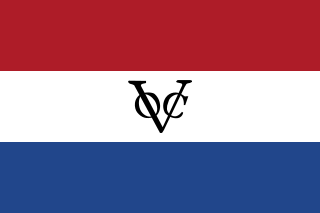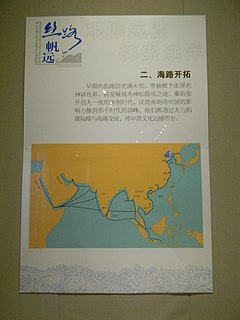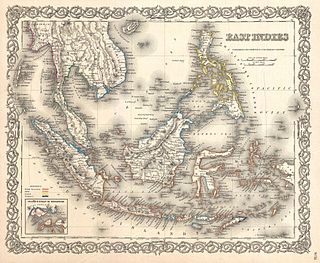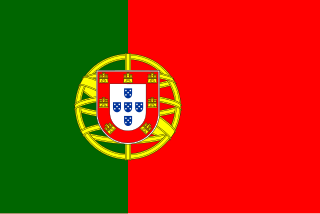 W
WLarge-scale social restrictions (LSSR) are currently in place in Indonesia in response to the COVID-19 pandemic. The restrictions are implemented by local governments with the approval of the Ministry of Health. It includes measures such as closing public places, restricting public transport, and limiting travel to and from the restricted regions.
 W
WThe archaeology of Indonesia is the study of the archaeology of the archipelagic realm that today forms the nation of Indonesia, stretching from prehistory through almost two millennia of documented history. The ancient Indonesian archipelago was a geographical maritime bridge between the political and cultural centers of Ancient India and Imperial China, and is notable as a part of ancient Maritime Silk Road.
 W
WBatavia, also called Batauia in the city's Malay vernacular, was the capital of the Dutch East Indies. The area corresponds to present-day Jakarta, Indonesia. Batavia can refer to the city proper or its suburbs and hinterland, the Ommelanden, which included the much-larger area of the Residency of Batavia in the present-day Indonesian provinces of Jakarta, Banten and West Java.
 W
WThe Bruneian Empire or Empire of Brunei, also known as Sultanate of Brunei, was a Malay sultanate, centred in Brunei on the northern coast of Borneo island in Southeast Asia. Bruneian rulers converted to Islam around the 15th century, when it grew substantially since the fall of Malacca to the Portuguese, extending throughout coastal areas of Borneo and the Philippines, before it declined in the 17th century.
 W
WBuddhism has a long history in Indonesia, and is recognized as one of six official religions in Indonesia, along with Islam, Christianity, Hinduism and Confucianism. According to the 2010 national census roughly 0.8% of the total citizens of Indonesia were Buddhists, and numbered around 1.7 million. Most Buddhists are concentrated in Jakarta, Riau, Riau Islands, Bangka Belitung, North Sumatra, and West Kalimantan. These totals, however, are probably inflated, as practitioners of Taoism and Chinese folk religion, which are not considered official religions of Indonesia, likely declared themselves as Buddhists on the most recent census. Today, the majority of Buddhists in Indonesia are Chinese, however small numbers of native
 W
WAccording to Act Number 10 of 1964, the current capital of Indonesia is Jakarta. Located on the island of Java, Jakarta was formerly called Batavia, its name during the Dutch colonial period. In the early 20th century, Dutch East Indies government attempted to relocate the capital from Batavia to Bandung. During Indonesia's struggle for independence, the government of Indonesia moved the capital to Yogyakarta and Bukittinggi, where it remained for a short time until the restoration of control of Jakarta.
 W
WDe-Sukarnoization, also spelled de-Soekarnoization, is a policy from the transition to the New Order with which Suharto intended to defame Indonesia's first president, Sukarno, and lessen his presence in Indonesian history.
 W
WThe djong, jong, or jung is a type of ancient sailing ship originating from Java that was widely used by Javanese and Malay sailors. The word was and is spelled jong in its languages of origin, the "djong" spelling being the colonial Dutch romanisation.
 W
WThe Dutch East India Company had a presence in the Malay archipelago) from 1603, when the first trading post was established, to 1800, when the bankrupt company was dissolved, and its possessions nationalised as the Dutch East Indies.
 W
WGrimm & Co. was a two-story bakery (patisserie), restaurant, and dance hall in Surabaya, Indonesia. Opened in 1888, it was situated at Jalan Pasar Besar. The location is now the Tai Chan Restaurant.
 W
WThe history of Sunda Kingdom spanned almost a millennium, between 7th to 16th century. It is not sure however, whether the Sunda Kingdom was actually a continuous polity or not, nor whether its rulers belongs to a single continuous lineage of dynasty or not. This is because the scarcity of evidences, historical records and archaeological findings that plausibly connected to this kingdom.
 W
WThe Inter-Governmental Group on Indonesia (IGGI) was established in 1967 as an international consortium of official donors to coordinate the provision of foreign assistance to Indonesia. IGGI was the lead official grouping of donors to Indonesia from 1967 until early 1992 when it was abolished and replaced by the Consultative Group on Indonesia (CGI). For the 25 years up to 1992, IGGI was a key regional institution in Southeast Asia. It helped provide strong international support for Indonesia's economic recovery after the economic difficulties in Indonesia during the period of the Sukarno presidency in 1950s and 1960s.
 W
WThe Javanese presence in Australia has been reported by native Southeast Asian and European people over several centuries. The most renowned record is from the itinerary of Chiaymasiouro, king of Demak, and Declaraçam de Malaca e India Meridional com o Cathay by Manuel Godinho de Eredia. Chiaymasiouro describes a land called Luca Antara in Southeast direction of Java, which Eredia coined the term India Meridional. According to Chiaymasiouro's accounts, a subgroup of Javanese people already settled in those lands, but when Eredia's servant went to Luca Antara in 1610, the land had seemingly been abandoned.
 W
WThe history of the Jews in Indonesia began with the arrival of early European explorers and settlers, and the first Jews arrived in the 17th century. Most of Indonesian Jews arrived from Southern Europe, the United Kingdom, the Netherlands, Belgium, Germany, France, Middle East, Northern Africa, India, China and Latin America. Jews in Indonesia presently form a very small Jewish community of about 100–550, of mostly Sephardi Jews. Judaism is not recognized as one of the country's six official religions, and members of the local Jewish community have to register as Christian or another recognized religion on their official identity cards.
 W
WKudungga (Ku-ṇḍu-ṅga) was the founder of the kingdom Kutai Martadipura with the title of Maharaja Kudungga Anumerta Devavarman, who ruled around the year 350 AD or 4th century AD. Kutai Martadipura led by Kudungga was not yet serves as a king, but as a community leader or chieftain. Kutai Martadipura during Kudungga rule do not have a regular and systematical system of governance. In contrary, the latest claim is said that Maharaja Kudungga is possibly a king from ancient kingdom Bakulapura in Tebalrung , and Asvavarman which his son-in-law rather his son, then become the first king of Kutai Martadipura.
 W
WThe Austronesian Makassar people from the region of Sulawesi began visiting the coast of northern Australia sometime around the early to middle 1700s, first in the Kimberley region, and some decades later in Arnhem Land.
 W
WThe Maritime Silk Road or Maritime Silk Route refers to the maritime section of the historic Silk Road that connected China, Southeast Asia, the Indian subcontinent, Arabian peninsula, Somalia, Egypt and Europe. It flourished between the 2nd century BC and 15th century AD. Despite its association with China in recent centuries, the Maritime Silk Road was primarily established and operated by Austronesian sailors in Southeast Asia, Tamil merchants in India and Southeast Asia, Greco-Roman merchants in East Africa, India, Ceylon and Indochina, and by Persian and Arab traders in the Arabian Sea and beyond.
 W
WIndonesia is the common and official name to refer to the Republic of Indonesia or Indonesian archipelago; however, other names, such as Nusantara and East Indies are also known. Some names are considered obsolete and confined to certain periods of history, while some might be more geographically specific or general.
 W
WPortuguese Timor refers to East Timor during the historic period when it was a Portuguese colony that existed between 1702 and 1975. During most of this period, Portugal shared the island of Timor with the Dutch East Indies.
 W
WThis is a survey of the postage stamps and postal history of Indonesia.
 W
WRiau-Lingga Sultanate, also known as the Lingga-Riau Sultanate, Riau Sultanate or Lingga Sultanate was a Malay sultanate that existed from 1824 to 1911, before being dissolved following Dutch intervention.
 W
WSinar Hindia was a left-wing Malay language newspaper from Semarang, Dutch East Indies, which published from 1900 to 1924. In its later years it was the mouthpiece of the left wing of the Sarekat Islam and its editors Mas Marco Kartodikromo and Semaun were instrumental in the rise of the Communist Party of Indonesia.
 W
WTuhfat al-Nafis is a work of Malay literature written by Raja Ali Haji in Jawi in around 1866-70. who is of Malay-Bugis descent. It records and chronicles events, especially those of the 19th century, that occurred in several Malay states. Some of the events recorded in the work include the founding of the state of Terengganu and the murder of Sultan Mahmud Shah II of Johor. Tuhfat al-Nafis means "the precious gift" in the Arabic language.
 W
WVivere pericoloso [ˈviːvere perikoˈloːzo] is a phrase in the Italian language, which means "to live dangerously". Usually, the phrase is used for dangerous things, such as people living in dangerous areas because of disaster, and in fear of recurrence.
 W
WA People's Council (Volksraad) for the Dutch East Indies was provided for by law in 1916, but its establishment was procrastinated until the actual installation of the Council in 1918. It was a hesitant and slow attempt at democratisation of the Dutch East Indies. The power of the Volksraad was limited as it only had advisory powers. Although part of the council was elected only a small proportion of the population had voting rights.